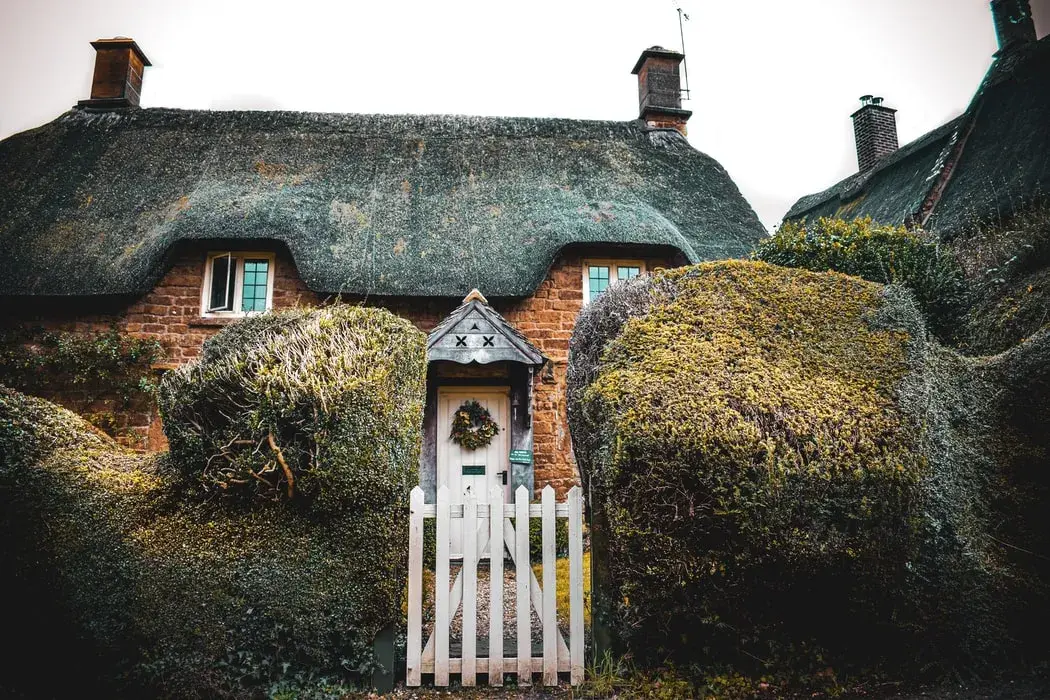Is Your Property Non-Standard? Insurance Impacts Explained
By Crowthorne Insurance on Oct 10, 2025 10:00:00 AM

A non-standard home is any home that uses non-standard materials in any part of its construction. Often this is visible at first glance. Often it is not. It's possible that you could be living in, or attempting to purchase a home with non-standard construction and not even know it. In this post, we'll look at some of the construction facets and materials that make a property non-standard, and why it's so important to know from an insurance standpoint.
What Makes A Property Non-Standard?
When most people think of non-standard home insurance, they're most likely picturing insurance for caravans, houseboats or modular, demountable homes. And while these are absolutely all examples of non-standard homes, a property can still be non-standard in its construction.
Even if it looks just like a standard home from the outside.
Standard construction materials, broadly speaking, refer to brick and stone foundations or exteriors with slate or tile roofing. Therefore, any construction materials outside of this are considered non-standard.
These include:
- Non-standard roofing: As well as thatched roofs, this also includes flat roofs or those that use shingles rather than tiles. These may be more prone to weather damage from wind, rain and waterlogging.
- Timber or steel frames: While a property may use standard materials like brick or stone for its outer walls, there may be timber or steel frames beneath. These can be prone to fire and water damage in the case of timber frames, and corrosion or rust in the case of steel frames.
- Prefabricated concrete: While rare, there are some houses still in the UK which are made from precast reinforced concrete (PRC). These were originally built as temporary housing during World War II for those displaced during the Blitz. Those that still remain have specific maintenance needs and weather-related risks.
- Cob construction: Cob construction is a method that dates back to the fourteenth century. It uses a combination of locally sourced natural materials including sub-soil, clay, straw and water. While these properties can last for centuries, they are very vulnerable to water damage and rising damp.
Why Are Non-Standard Properties Different?
Properties that use non-standard materials, as seen above, represent a different degree of risk to homeowners. While these materials can result in some beautiful, sustainable and idiosyncratic architecture, their vulnerabilities to wind, wear and time often mean that they require more maintenance than standard properties.
This higher degree of risk also has implications for home insurance, as insurers need to be aware of the risk factors affecting your property and how they will affect repair costs and lead times. Again, not every property with non-standard construction is visibly different. A surveyor may be able to find evidence of non-standard construction that is not immediately visible.
Do I Need A Non-Standard Property Insurance Policy?
Yes. Because non-standard properties generally embody a greater degree of risk, they may be ineligible for standard home insurance policies. This is why it's so important to be aware of any non-standard materials involved in your home's construction as failing to disclose these to your insurer may invalidate your claim or at the very least drive up your premium.
Our expert team of brokers can help you find the right insurance for your non-standard home, even if you live in a listed building or a property with subsidence or a high flood risk, get in touch today.
Image source: Canva
- Home Insurance (24)
- Car Insurance (12)
- Non-Standard Homes (12)
- Motor Trade Insurance (7)
- Subsidence (7)
- Bad Credit History (2)
- Business Insurance (2)
- Insurance Broker UK (2)
- Motorcycle Insurance (2)
- Public Liability Insurance (2)
- Travel Insurance (2)
- Additional Business Use (1)
- Car Accident (1)
- Holiday Home Insurance (1)
- Motor Insurance Database (1)
- Motor Trade Policy (1)
- Service Indemnity Insurance (1)
- November 2025 (3)
- October 2025 (4)
- September 2025 (3)
- August 2025 (1)
- April 2025 (1)
- March 2025 (1)
- November 2024 (1)
- October 2024 (2)
- September 2024 (1)
- July 2023 (1)
- June 2023 (1)
- June 2022 (1)
- March 2022 (2)
- February 2022 (2)
- January 2022 (2)
- September 2021 (1)
- August 2021 (5)
- July 2021 (2)
- June 2021 (2)
- May 2021 (2)
- March 2021 (2)
- February 2021 (2)
- January 2021 (2)
- December 2020 (2)
- November 2020 (1)
- October 2020 (3)
- September 2020 (2)
- August 2020 (2)
- July 2020 (2)
- June 2020 (1)
- May 2020 (2)
- April 2020 (3)
- March 2020 (2)
- February 2020 (2)
- January 2020 (5)
- December 2019 (3)
- November 2019 (3)
- October 2019 (1)
- September 2019 (4)
- August 2019 (4)
- July 2019 (7)
- June 2019 (4)
- April 2019 (3)
- March 2019 (3)
- February 2019 (1)
- June 2010 (1)
Subscribe by email
You May Also Like
These Related Stories

What Properties Can I Get Non-Standard Home Insurance Quotes For?

What Kind Of Insurance Do Lodgers Need?





No Comments Yet
Let us know what you think